Notionally the theme of this show is sky and water. This is a recurrent theme in Sandblom’s work. It stems in part from a fascination with looking at water and sky in nature. Sandblom is an avid sailor, and so has been confronted with these elemental phenomena for a great deal of his life. I say ‘notionally’ because over the years he has come to appreciate the ephemeral nature of these elements, which has led him to ask how it is exactly that we perceive them. So the show is more about perception than it is about sky and water. These two subjects are ideal in terms of understanding the nature of perception – how we make sense of the sense data constantly bombarding us.
Installation view of Mikael Sandblom, Clouds and Waves at Gallery 1313
Sandblom’s works are computer generated, that is, designed on the computer. These designs are then printed, or woven using a modern version of the Jacquard loom. As well, he paints over sections of the prints. In addition, on occasions he places plexiglass with patterns in front of the prints or weaves. These devices are used by Sandblom to emphasise the materiality of the layered surfaces, effectively enticing viewers to come up close. In doing so they see the images dissolve before their eyes. This reflects a strategy of attempting to mirror the way we perceive such ephemeral phenomena as clouds and waves in real time, that is, how we try to grasp what we see only to find it slip away.
But Sandblom doesn’t want just to observe that, unlike a camera, we are incapable of capturing a mental image of waves on water, for instance. His larger point, one might say, is that there is nothing for us to capture. More precisely, the quicksilver nature of waves shows the limitation of our brain’s capacity to record reality in the way a camera does. In general, even before a relatively static scene, the detailed grasp of our overall field of vision is limited to a very small area equivalent to that of a thumbnail at arm’s length. All the other apparent details we ‘see’ in addition at the periphery radiating outward are, as Sandblom describes it, ‘hallucinated’ in the sense that we presume they are there when they simply are not.
Steer Your Way, 2024, Acrylic, UV printed graphics on aluminum. Coated with Golden MSA Varnish with UVLS
This fact about our perceiving, Sandblom maintains, generalises. When we perceive the world we are effectively making stuff up. It is understood that here we are concerned with visual perception, of course, as necessarily the subject of his artworks. In other words, perceiving is a constant process of interpreting and reinterpreting the things around us – thus assuming that an object in the distant, say, is a dog, but reinterpreting it as a pile of clothing as we approach it. And it could change again! Accordingly, Sandblom remarks: “Perceiving creates the world. By looking carefully, we discover that we often unnecessarily narrow our experience of what is possible. At the same time, we make the mistake of believing that the world we conjure with our minds is complete, solid, and permanent. What we see is not all there is.”
We find here in his thinking a nod to idealism, namely the view that the world is the product of our minds, or our ‘brains’ as he would prefer to put it. It might be better to say that the world as we perceive it is created by us, rather than the world as such. Quibbling aside, taken at face value this view inspires Sandblom’s art. He sees an inventiveness in our perception that parallels artistic invention. The devices he uses in his artworks are designed to reveal how insubstantial or provisional our perceptions are on inspection.
Shore patterns, 2022, Jacquard Tapestry, UV printed aluminum and Plexiglas construction
Following this thought clouds are reinterpretable in an infinity of ways. Thus Sandblom is inspired to represent clouds as floating worlds of architectural details – stairs, windows, walls, doors, or just cubes and planes, that bloom into a scene that is reminiscent of the paintings of the futurists who exulted over the triumph of the machine, or again those of the cubists with their madcap attempt to represent an object at every angle all at once. These cloud pictures have a wonderful explosive energy.
My allusion to futurism is not incidental here. Behind all the conceptual analysis that informs his art, Sandblom’s works betray a strong aesthetic bias, one that is not unlike that of the futurists such as Umberto Boccioni. These are works that are clearly mediated by machine. He shares with the futurists a preoccupation with expressing, perhaps per impossibile, dynamic forms on a static picture plane.
Toy Box, 2024, Acrylic, UV printed graphics on aluminum. Coated with Golden MSA Varnish with UVLS
The predominantly cold blue palette, emblematic of the elements of air and water, is punctured by the heat of uncontrolled, uncontrolable movement. There is something primordially delightful about Sandblom’s pictures. The most successful of his cloud-based pictures are those that are spatially ambiguous, where background and foreground are hard to distinguish from one another, e.g., in his “Toy Box”. His series of horizontal compositions based on the theme of waves is less frenetic, almost calming by comparison. I have personally had the privilege of witnessing the development of Sandblom’s work over decades. It is only getting better. These sophisticated beautiful artworks are worthy of anyone’s attention.
Horizon, 2022, Jacquard Tapestry, UV printed aluminum and Plexiglas construction.
Hugh Acock
Images are courtesy of the artist.
*Exhibition information: Mikael Sandblom, Clouds and Waves, October 10 – 20, 2024, Gallery 1313, 1313 Queen Street West, Toronto. Gallery hours: Wed – Sat 1 – 5 pm, Sun 1 – 4 pm.

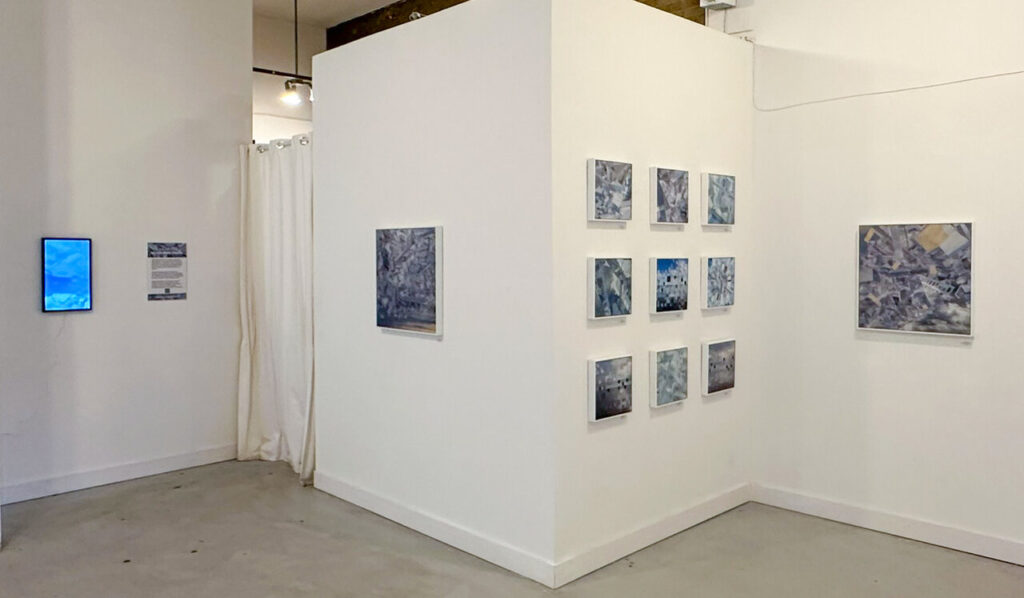
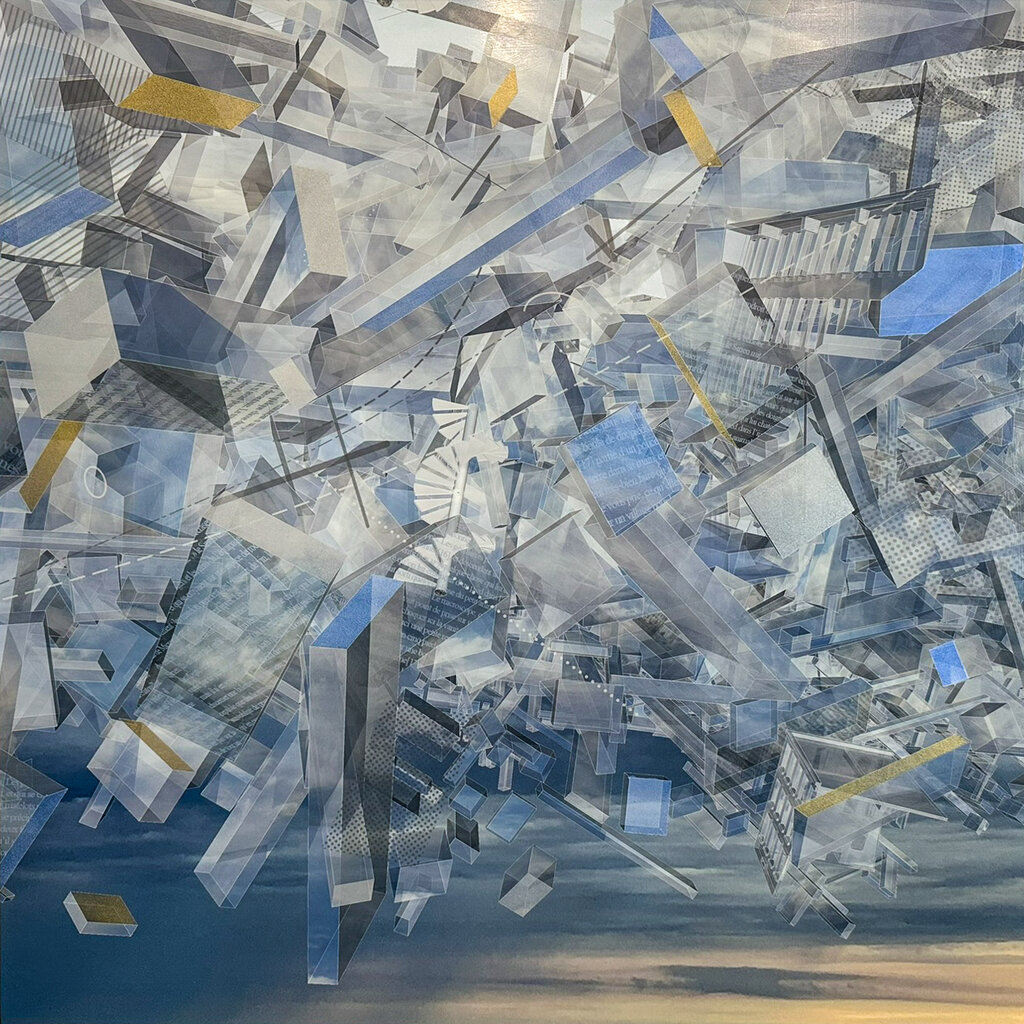
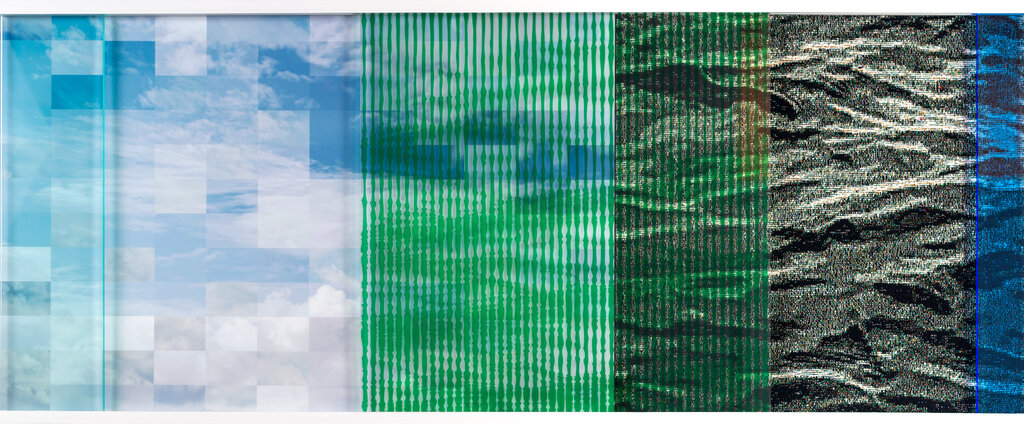
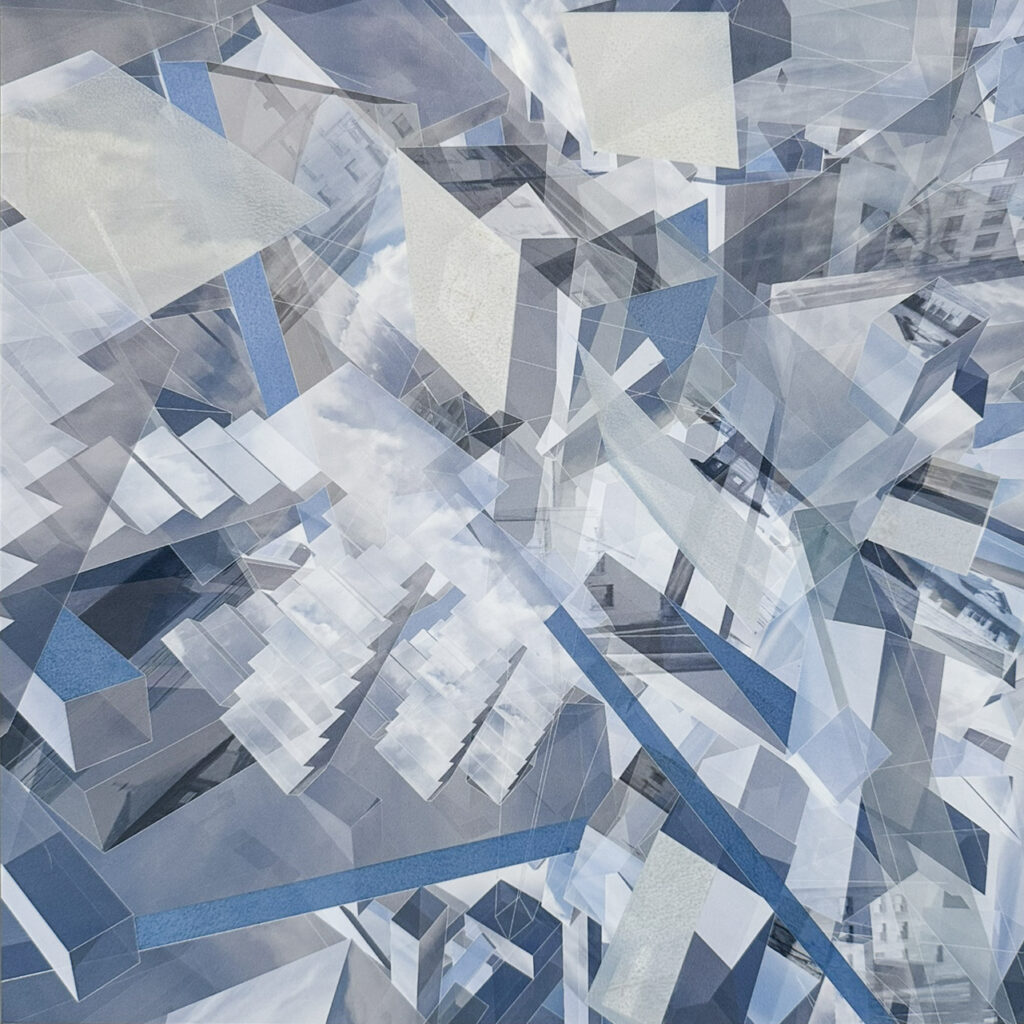
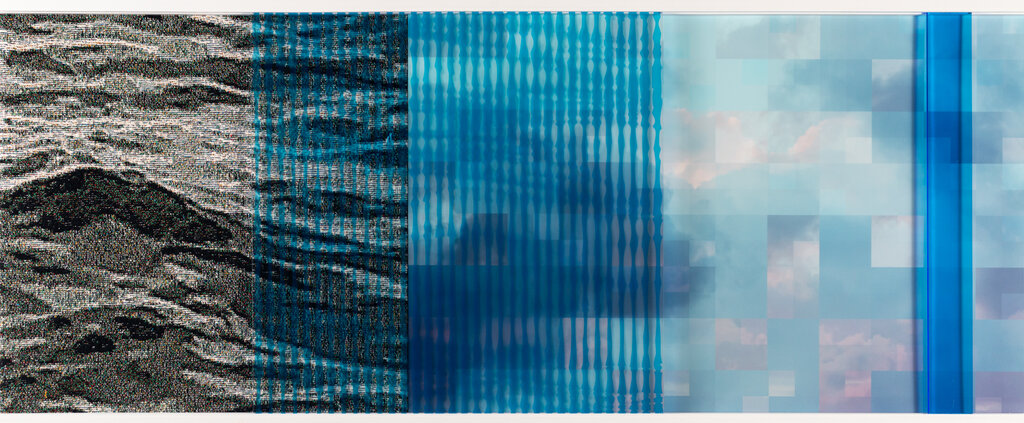
THe work is truly amazing and deep in context. Bravo Mikael